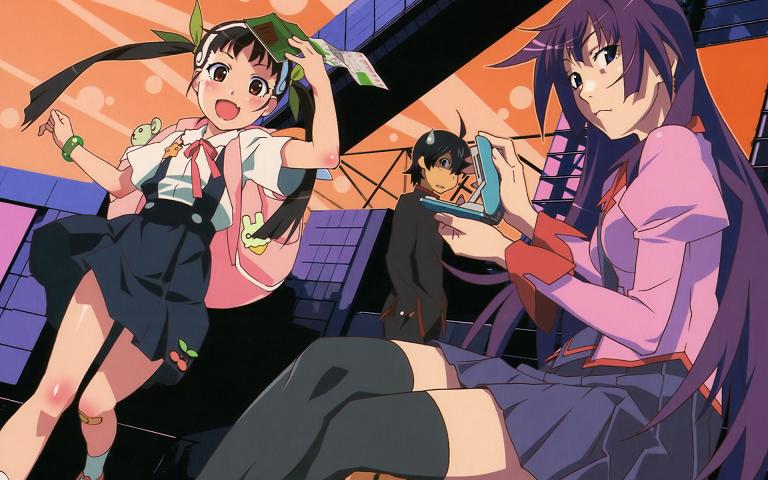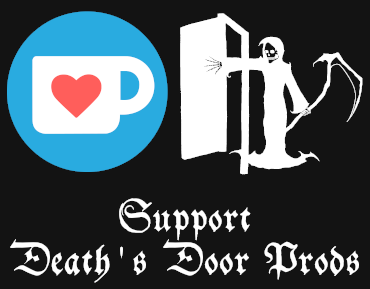
Originally a series of light novels by Nishio Ishin, Bakemonogatari (Ghostory) was adapted into an anime in 2009 by Studio Shaft with the help of Akiyuki Shinbo, the man behind the crazy surrealism of Sayonara Zetsubo-Sensei. The series follows the (mis)adventures of Koyomi Araragi, a recovering vampire, who is a third year at his high school. The series kicks off with a chance encounter with Hitagi Senjogahara as she falls down the stairs into his arms. Our fearless hero discovers that her weight has been taken by a crab god and decides to take her to see Meme Oshino, the homeless man who was instrumental in his recovery from vampirism. Araragi runs into various others throughout the course of the series with supernatural problems and tries to help them.
One of the first things I need to mention is the art/animation style of the show. In my opinion, it’s brilliant if a little confusing at times. Throughout the course of any given episode there are little slides that appear for a couple of frames that give additional insight into what the characters are thinking, or sometimes they have very little to do with anything that’s going on at the time. As they most often appear in mid-dialogue this can be jarring for a lot of people but these little asides are so well blended into the scenes that if I were to watch a scene without them it would seem like there wasn’t enough substance. As mentioned before, Akiyuki Shinbo is a major component of the show’s art. It turns out to be very reminiscent of Sayonara Zetsubo-Sensei but without the flatness of colour. The excellent use of tones and highlights gives Bakemonogatari the extra bit of polish that I really enjoy seeing in an anime.
The show very obviously focuses on the characters and how they interact with one another and it demonstrates this by creating very monotonous and bland backgrounds. This causes the characters to seem that much more interesting and somewhat forces you to pay attention and actually legitimately care about them and their relationships. The characters themselves are amazingly realistic, with flaws and strengths, with nobody coming across as a Mary Sue. Of course there are some weird things that happen to give the story some flair, but most of those can be written off as being part of the supernatural nature of the show. Personally, I disagree with many of the decisions that Araragi makes, even given allowances for special circumstances but that, I can honestly say, is more because of me not being the same as him in every way than any fault on the designer.
The rigid arc format of the episodes leaves something to be desired, however, giving an impression of many unrelated stories that just happen to involve the same characters rather than an overarching story that connects them all. Individually the arcs are well paced and logically ordered, but the time skip in between some of them makes it so I need to re-immerse myself in the story with each new part. Admittedly, it doesn’t take very long but it is there.
Overall, Bakemonogatari is one of the best animes I have seen in a while. There is a sequel series, Nisemonogatari (Impostory), that started airing in the Winter season and it is much of the same, but giving much more focus to Araragi’s two younger sisters. It can get a little too artsy at times but no matter what you enjoy, there will be something you like in Bakemonogatari. I cannot recommend it highly enough.
Final Score: 4.5/5




Add comment